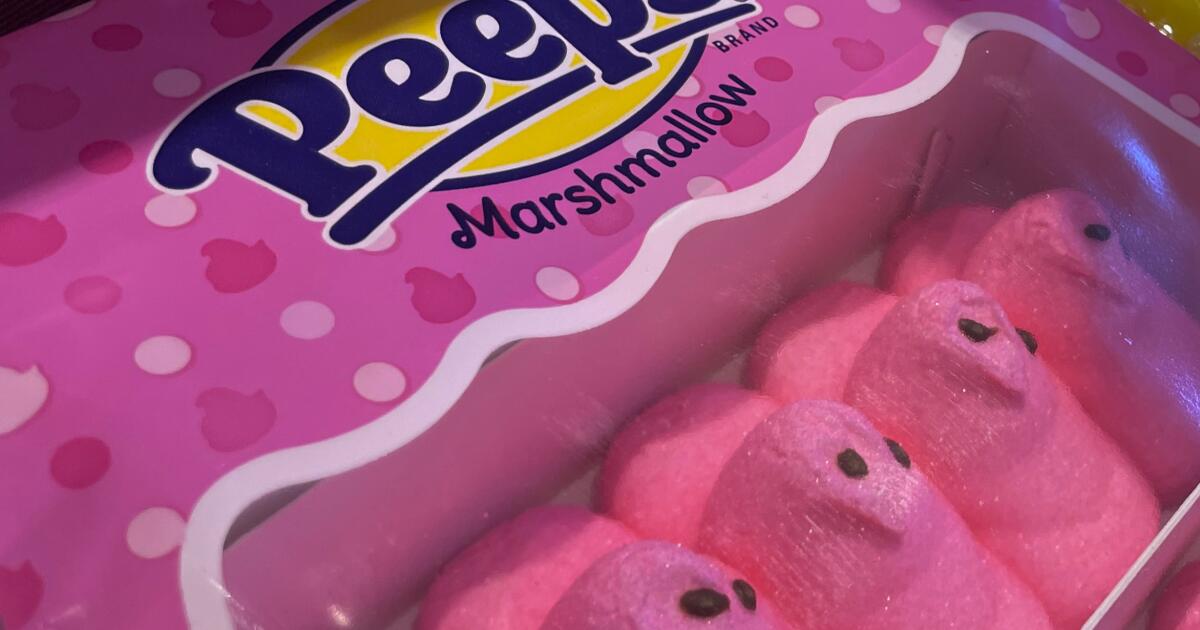California became the first state in the nation to prohibit four food additives found in popular cereal, soda, candy and drinks after Gov. Gavin Newsom signed a ban on them Saturday.
The California Food Safety Act will ban the manufacture, sale or distribution of brominated vegetable oil, potassium bromate, propylparaben and red dye No. 3 — potentially affecting 12,000 products that use those substances, according to the Environmental Working Group.
The legislation was popularly known as the “Skittles ban” because an earlier version also targeted titanium dioxide, used as a coloring agent in candies including Skittles, Starburst and Sour Patch Kids, according to the Environmental Working Group. But the measure, Assembly Bill 418, was amended in September to remove mention of the substance.



brominated vegetable oil - it’s found in citrus sodas because the (natural) citrus flavoring is an oil, an orange or citrus oil of some type, and is prone to separating if there’s not a way to keep is suspended in water. And I’ve seen separated sodas in a QA testing lab and they look pretty nasty. I imagine orange sodas that haven’t already reformulated will have to, so they might end up tasting different. I know orange Gatorade reformulated to get rid of BVO about 10 years ago or more. https://www.fda.gov/food/food-additives-petitions/brominated-vegetable-oil-bvo
As a note, California also forced (by being one of the largest markets) reformulation of dark sodas containing caramel color across the nation. Caramel color is what happens when you brown toast or caramelize sugar. I kinda just scratched my head because it seems you’ll get more exposure to the carcinogen they’re talking about if you burn your toast. https://www.fda.gov/food/food-additives-petitions/questions-answers-about-4-mei . And if burned baked goods were a genuine problem, it seems we would’ve known it long before now.
I think most industries definitely need more regulation, but California sometimes seems to do banning so often on the slightest sliver of data, and it kinda creates a regulatory “crying wolf” situation, where people become so used to the “known to cause cancer in California” warnings that they start to ignore ALL of them and can’t differentiate the ones that are dead fucking serious and the ones that honestly require unusual situations for it to happen like someone eating/consuming a physically unlikely amount of the product constantly.
I personally think it’s a problem when people don’t have a way to differentiate the warnings about things that’ll genuinely fuck you up under current levels of exposure, and things you basically have to go dip yourself in a vat of daily for months before it harms you.
And I think it’s a problem because people naturally have short attention spans, and when EVERYTHING has a warning, you know people aren’t going to actually do research to figure out which one is dead serious and which is fluffed up and starting at shadows. So you start to get inconsistent heeding of the warnings. Eventually you’ll ignore the boy crying wolf because you’re so tired of going to to check if the wolf is there, and the wolf’ll come eat you then.
I have no solutions for solving it though, given how polarized things are (one side massively under-regulating, and the other sometimes starting at shadows) and how few people are willing to listen to nuance.
A reason you don’t see those warning labels as often today as 20 years ago is that a pattern has emerged of:
California bans or labels something
biggest companies change it to avoid ban/label
3.US implements a national regulation to match California (since the big companies have already complied anyway)
Bans are different from warnings, particularly because they don’t require you to pay attention to them in order to work.
As someone with a chemistry background it’s a real pet peeve of mine when people fearmonger about benign chemicals or go “if I can’t pronounce it then it shouldn’t be in my food!” And it helps absolutely no one that there are cases where the FDA bends to the industry.
If you asked me if I’d rather soak my exposed hands in benzene for an hour, or eat food with any of these now banned products, I would instantly pick the food without question. The public isn’t necessarily aware that some things are far more carcinogenic than others.
And to add to that, we’ve got things which cause harm because of their physical properties, not chemical. All particulate matter is horrible for our lungs and can cause cancer and permanent damage, but the matter itself could be totally benign. It’s why even nicotine free cigarettes cause some harm – all smokes have suspended particulate matter. It’s a concern with vaping that metal nanoparticles might be generated too.
I know I’m preaching to the choir here. We just don’t have the public education nor warnings necessary to actually represent these things accurately.
some kind of rating system would probably help.